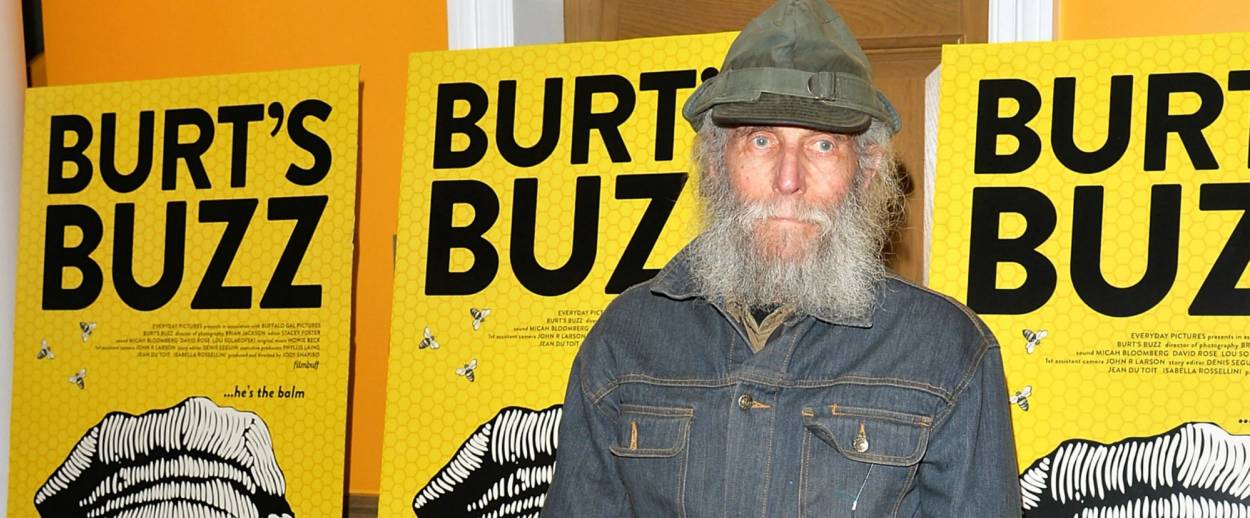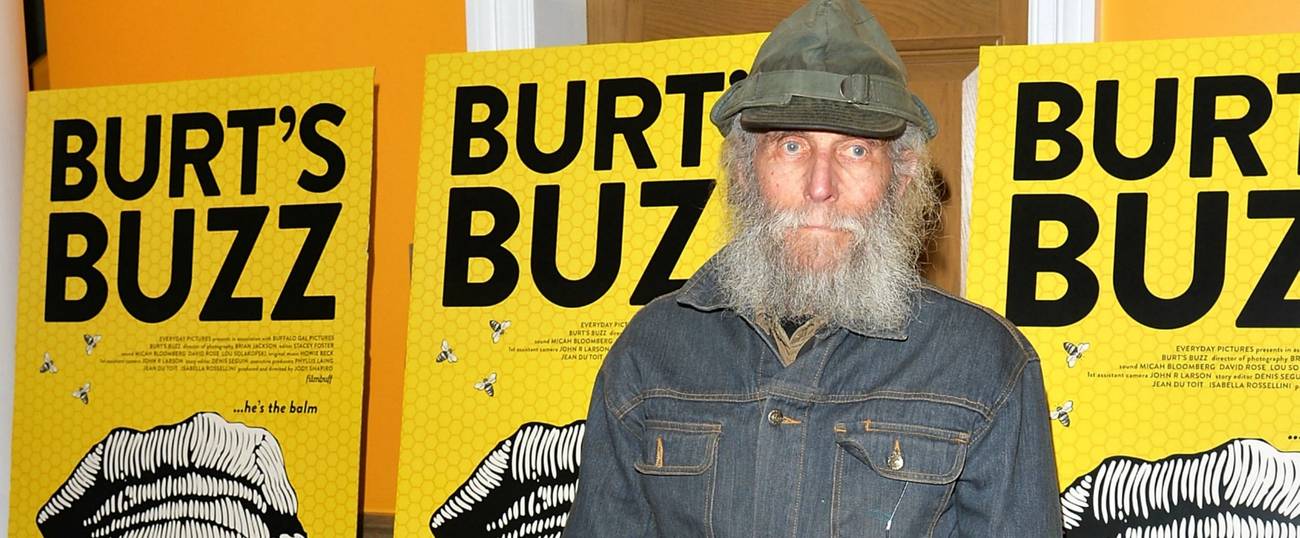Burt Shavitz, the Co-Founder and Face of Burt’s Bees, Dies
After selling his stake, the beekeeping businessman moved to Maine: ‘A good day is when no one shows up and you don’t have to go anywhere.’




Burt Shavitz, whose face was the image associated cosmetics brand Burt’s Bees, a company he co-founded, died at the age of 80 on Sunday.
Despite making millions through his role in the now famous organic lip balm company, the reclusive Jewish beekeeper spent the latter half of his life in rural Maine, living a hermit-like existence in homes with only cold running water, wood stoves for the wintertime, and two golden retrievers. He died of a respiratory-related illness surrounded by friends and family.
Ingram Berg Shavitz was born in Manhattan in May 1935. He lived with his father, an actor, and his mother, a sculptor in Queens, before moving to Delaware for college. But Shavitz was drafted into the Army, serving in Germany, before he could graduate. It was during this time that he changed his name to Burt, the New York Times reported.
Upon his return to America, he moved back to New York and moved into a midtown apartment. He made a living as a photojournalist, and covered the civil rights movement, including cultural icons like Malcolm X. He also covered JFK’s inaugural address in 1961 and the first Earth Day in 1970.
But he soon grew tired of the hustle and bustle of city life, eventually swapping it out for a simpler existence in Ulster County in upstate New York. It was there that he learned the hobby of beekeeping while he worked as a caretaker at Mohonk Mountain House. Of beekeeping, Shavitz told the Times: “I realized I had it made, because you don’t have to destroy anything to get honey. You can just use the same things over and over again, put it in a quart canning jar, and you’ve got $12.”
Shortly after this, he moved to Maine where he met Roxanne Quimby, his future business partner, completely by chance. Shavitz came upon “a divorced mother of two thumbing for a ride in rural Maine in 1984,” The Los Angeles Times reported, and they became romantic partners. One day, Shavitz suggested his lover make candles out of his bee’s leftover wax and Quimby saw an opportunity. The New York Times reported:
Then, improving on a formula found in a 19th-century farmer’s journal, she combined the wax with sweet almond oil, and Burt’s Bees lip balm was born, in 1991.
The eco-friendly lip balms eventually became the basis for a multi-million dollar business. However, the business partnership ended sorely in 1994:
Mr. Shavitz said he was forced out after having an affair with an employee. Ms. Quimby bought his one-third share for $130,000 (she owned the other two-thirds), but gave him $4 million more after the company was sold.
In a 2013 documentary film made about Shavitz, called “Burt’s Buzz,” the beekeeper said about Quimby that “I’d like never to see her again.”
“A good day,” he explains in the documentary, “is when no one shows up and you don’t have to go anywhere.”
Up until his death, Shavitz continued to make promotional appearances for the cosmetics company as its brand ambassador; and his iconic bearded face continues to adorn the packaging of many of his old company’s products.
But Shavitz relished his reclusive life. In a Q & A with the New York Times last year he explained:
I’ve got 40 acres. And it’s good and sufficient and it takes good care of me. There’s no noise. There’s no children screaming. There’s no people getting up at 5 o’clock in the morning and trying to start their car and raising hell. Everybody has their own idea of what a good place to be is, and this is mine.
Jas Chana is a former intern at Tablet.